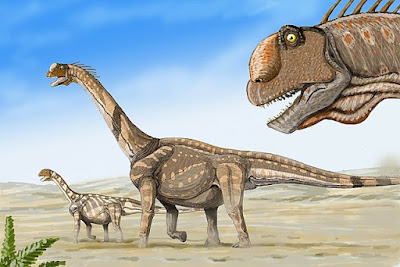Perhaps a Camarasaurus in China
Although Darwin's disciples insist that dinosaurs went extinct millions of years ago, long before humans evolved and set up camp, there is evidence to the contrary. There are historical records and artifacts that have rather accurate descriptions and representations of dinosaurs, such as St. Davids dragon that we examined a spell back. There are many more, including what looks like a Camarasaurus from China.
Creationists accept historical evidence (including the Bible) of dinosaurs and humans living contemporaneously. Nowadays, we only know what some of them looked like from fossils and such, but people long ago did not have (or know about) fossils underfoot. They still had some surprisingly accurate illustrations and artwork of what were called dragons prior to Richard Owen coming up with the word dinosaur.
An artifact from China dating from the third century BC had detailed depictions of what appears to be a Camarasaurus. It is interesting that hundreds of years later, Marco Polo described what appeared to be dinosaurs in China. This older bronze work has details, with a bit of fanciful artwork on the tail. The truth is that dinosaurs, humans, and everything else were created recently, not the product of blind chance evolution.
 |
| Credit: Wikimedia Commons / Dmitry Bogdanov |
An artifact from China dating from the third century BC had detailed depictions of what appears to be a Camarasaurus. It is interesting that hundreds of years later, Marco Polo described what appeared to be dinosaurs in China. This older bronze work has details, with a bit of fanciful artwork on the tail. The truth is that dinosaurs, humans, and everything else were created recently, not the product of blind chance evolution.
A late Eastern Zhou (3rd century BC) wine vessel excavated in 1975 from a tomb in Sanmenxia, Henan Province, China, demonstrates this beautifully. Cast in bronze with much of its gold inlay still preserved, the stunning artistry is clear. Looking distinctly dinosaurian are four animals, one featured on each side of the wine vessel, easily recognizable as sauropod dinosaurs. Due to the particularly rounded head at the end of the long thin neck peering over the edge it may very well be depicting a Camarasaurus. The thick muscular legs come down from the body and the tail extends out, suspended in the air, not touching the sides of the vessel.To read the entire article, click on "A Chinese Camarasaurus?"